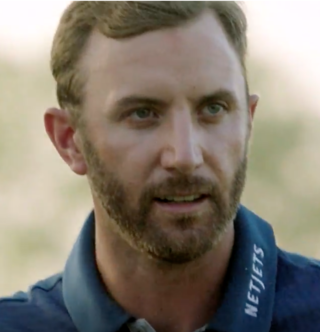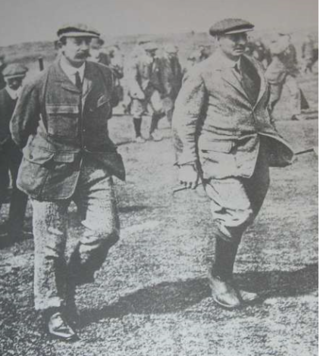Winners
| Year | Winners | Country | Venue | Score | Margin of victory | Runner-up | Winner's share (£) | Ref |
|---|---|---|---|---|---|---|---|---|
| 1932 | Abe Mitchell | Long Ashton Golf Club | 271 | 1 stroke | | 100 | [1] |
| Tournament information | |
|---|---|
| Location | Long Ashton, Bristol, England |
| Established | 1932 |
| Course(s) | Long Ashton Golf Club |
| Final year | 1932 |
| Final champion | |
| Abe Mitchell | |
The Bristol Evening World Tournament was a professional golf tournament played at Long Ashton Golf Club near Bristol, England, in May 1932 and sponsored by the Bristol Evening World newspaper. The event was held just once and was the first important professional tournament held in the West of England. Total prize money was £350.
The tournament was won by Abe Mitchell with a score of 271, a stroke ahead of Syd Easterbrook. An American, Walter Pursey was third, 12 stroke behind Mitchell. The event was noted for its exceptionally low scoring, the 271 total being a record low score for an important 72-hole tournament. [1] Mitchell had the lowest round with his third round of 65. [1]
| Year | Winners | Country | Venue | Score | Margin of victory | Runner-up | Winner's share (£) | Ref |
|---|---|---|---|---|---|---|---|---|
| 1932 | Abe Mitchell | Long Ashton Golf Club | 271 | 1 stroke | | 100 | [1] |

Frederick J. Daly, MBE was a Northern Irish professional golfer, best known for winning The Open Championship in 1947 at the Royal Liverpool Golf Club, Hoylake. Born in Portrush, County Antrim, he was the first Irishman from either side of the border to win the Open and the first to play in the Ryder Cup. He remained the only Irish winner of the Open until Pádraig Harrington won it in 2007 and the only Northern Irish major winner until Graeme McDowell won the U.S. Open in 2010.

The Irish Open is a professional golf tournament on the European Tour.
Stableford is a scoring system used in the sport of golf. Rather than counting the total number of strokes taken, as in stroke play, it involves scoring points based on the number of strokes taken at each hole. Unlike traditional scoring methods, where the aim is to have the lowest score, under Stableford rules, the objective is to have the highest score.

Edward Rivers John Ray was a British professional golfer, one of the leading players of the first quarter of the 20th century. He won two major championships, the Open Championship in 1912 and the U.S. Open in 1920, and contended in many others. He was captain of the British team in the inaugural Ryder Cup, in 1927.

George Duncan was a Scottish professional golfer. He was also a golf course designer. His much sought-after professional teaching and swing analysis skills lead to him being referred to as "the pro's pro." He won the 1920 Open Championship.

In golf, par is the predetermined number of strokes that a proficient golfer should require to complete a hole, a round, or a tournament. For scoring purposes, a golfer's number of strokes is compared with the par score to determine how much the golfer was either "over par", "under par", or was "even with/equal to par".

Samuel Dewey Byrd was an American professional baseball outfielder and professional golfer. He played in Major League Baseball (MLB) and on the PGA Tour. Byrd is the only person to play in both the World Series and the Masters Tournament.
The British PGA Matchplay Championship was a match play golf tournament that began in 1903 and ran until 1979. Between 1903 and 1969, the event was sponsored by the now defunct British newspaper the News of the World, and was commonly known by the paper's name. Initially organised as the championship of British professionals, the event came to include invited players from other countries – in particular from around the Commonwealth. On occasion, American professionals also took part, notably in 1949 when eight members of the victorious U.S. Ryder Cup side accepted invites to the event, Lloyd Mangrum reaching the semi-finals.

Christopher James Wood is an English professional golfer who currently plays on the European Tour. He was the low amateur in the 2008 Open Championship at Royal Birkdale and tied for third in the following year's tournament held at Turnberry.

Golf is a club-and-ball sport in which players use various clubs to hit balls into a series of holes on a course in as few strokes as possible.

Dustin Hunter Johnson is an American professional golfer. He has won two major championships, the 2016 U.S. Open at Oakmont Country Club with a 4-under-par score of 276 and the 2020 Masters Tournament with a record score of 268, 20-under-par. He had previously finished in a tie for second at both the 2011 Open Championship and the 2015 U.S. Open. He has six World Golf Championships victories, with only Tiger Woods having won more, and was the first and only player to win each of the four World Golf Championship events.

Henry Abraham Mitchell was an English professional golfer. Mitchell had eight top-10 finishes out of 17 appearances in the Open Championship, his best performance being fourth in 1920. He was runner-up in the 1912 Amateur Championship and won the 1924 Miami Open.
Arthur Lees was an English professional golfer who played from the 1930s to 1960s. He was a member of four Great Britain Ryder Cup teams in the late 1940s and 1950s, and won several tournaments in Europe during his career. In addition, he spent nearly 30 years as the head professional of Sunningdale Golf Club, holding the position until he was almost 70 years old.

Tom Williamson was an English professional golfer who played in the early 20th century. Williamson finished in the top 10 in the Open Championship on six occasions and played in it over fifty years. His best performance came in the 1914 Open Championship when he tied for fourth place, six shots behind the winner. With Harry Vardon he won the 1913 Sphere and Tatler Foursomes Tournament by a convincing 7 & 5 margin. He was Captain of England in 1909 and represented England between 1904 and 1913. He won the Midland Professional Championship when it was first held in 1897 and a further six times. He was a renowned club maker and was the first to number clubs in 1906. He experimented with score cards placing a course plan on the reverse side in 1930. He designed sixty courses, the majority in the East Midlands. He was a founder member of the PGA and became its Captain in 1928. He had a good reputation as a teacher and taught Enid Wilson who won the English Ladies Championship three times. He was known as a modest man of integrity.

Frederick Mackenzie was a Scottish golfer of the early 20th century. He had a successful amateur career, winning the Dundee Evening Telegraph Cup three times between 1899 and 1903. He then had a brief spell as a professional in America, during which time he finished third in the 1904 U.S. Open. On his return to Scotland he gave up professional golf but was unable to get reinstated as an amateur. He played local competitions but was ineligible for the more important amateur tournaments.
The Roehampton Invitation Tournament was a British golf tournament played each April at the Roehampton Club from 1920 to 1935. From 1922 the tournament was played over three days. There was 36 holes of stroke play on the first day with the leading 16 players qualifying for a knock-out contest on the following two days. Except in 1920 the total prize money was £200. A challenge cup was awarded to the winner to remain the absolute property of any player who won the tournament on two occasions, not necessarily consecutive. Three players won the cup outright: Abe Mitchell, Mark Seymour and Archie Compston. The tournament was cancelled in 1936 because of "the crowded state of the fixture list".
The Daily Mail Tournament was a professional golf tournament played in the United Kingdom. The Daily Mail sponsored the St Andrews Tournament in 1919 and in 1920 continued their sponsorship with the start of the Daily Mail Tournament. The event was dropped after the 1927 tournament and not reinstated until 1936. The event was unusual in that it took place in 1940, after the start of World War II. The prize money for the 1940 event was just £500, money being raised for the Red Cross A tournament was also played in September 1945, soon after the end of the war, and was informally referred to as the "Victory" tournament. The last event was played in 1950.

The Leeds Cup is a golf tournament that has been played annually in northern England since 1902. The event is organised by the north region of the Professional Golfers' Association. It is the oldest trophy in professional golf that is still played for. The Tooting Bec Cup is older, having been first played for in 1901, but is no longer contested.
The Ryder Tournament was a professional golf tournament played at Verulam Golf Club in St Albans, England and sponsored by Samuel Ryder. The event was held just once, in 1928, and had total prize money of £500.
Patrick Joseph Mahon was an Irish professional golfer. He was one of the leading Irish professionals of the 1930s and had one exceptional season, 1937, where he was runner-up in three important British tournaments, third in another, finished second in the Harry Vardon Trophy standings and won the Irish Professional Championship. He won the Western Isles Open Championship in 1935 and won the Irish Professional Championship again in 1938 and 1939.